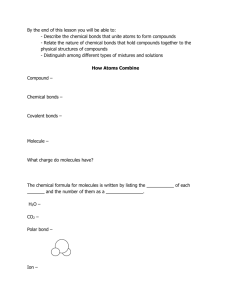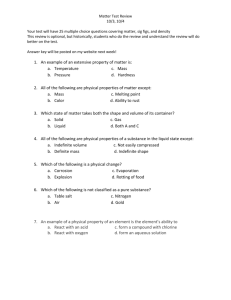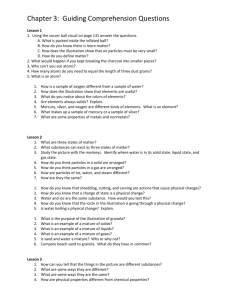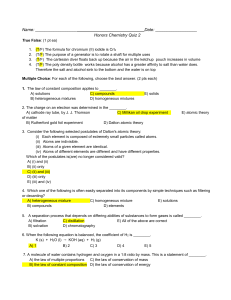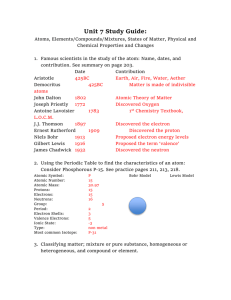Ch 15 Classification of Matter Guided Reading Questions
advertisement
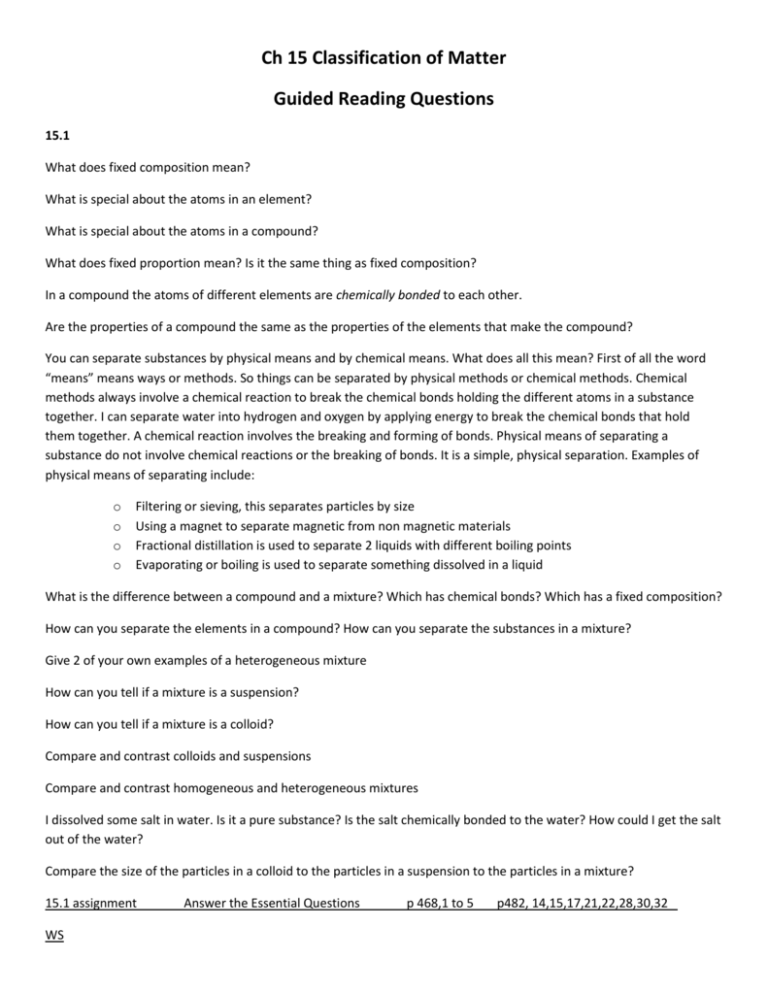
Ch 15 Classification of Matter Guided Reading Questions 15.1 What does fixed composition mean? What is special about the atoms in an element? What is special about the atoms in a compound? What does fixed proportion mean? Is it the same thing as fixed composition? In a compound the atoms of different elements are chemically bonded to each other. Are the properties of a compound the same as the properties of the elements that make the compound? You can separate substances by physical means and by chemical means. What does all this mean? First of all the word “means” means ways or methods. So things can be separated by physical methods or chemical methods. Chemical methods always involve a chemical reaction to break the chemical bonds holding the different atoms in a substance together. I can separate water into hydrogen and oxygen by applying energy to break the chemical bonds that hold them together. A chemical reaction involves the breaking and forming of bonds. Physical means of separating a substance do not involve chemical reactions or the breaking of bonds. It is a simple, physical separation. Examples of physical means of separating include: o o o o Filtering or sieving, this separates particles by size Using a magnet to separate magnetic from non magnetic materials Fractional distillation is used to separate 2 liquids with different boiling points Evaporating or boiling is used to separate something dissolved in a liquid What is the difference between a compound and a mixture? Which has chemical bonds? Which has a fixed composition? How can you separate the elements in a compound? How can you separate the substances in a mixture? Give 2 of your own examples of a heterogeneous mixture How can you tell if a mixture is a suspension? How can you tell if a mixture is a colloid? Compare and contrast colloids and suspensions Compare and contrast homogeneous and heterogeneous mixtures I dissolved some salt in water. Is it a pure substance? Is the salt chemically bonded to the water? How could I get the salt out of the water? Compare the size of the particles in a colloid to the particles in a suspension to the particles in a mixture? 15.1 assignment WS Answer the Essential Questions p 468,1 to 5 p482, 14,15,17,21,22,28,30,32 15.2 Be careful, the book talks about the behavior of a substance when referring to physical properties. Kep in mind that only some behaviors are physical, others are chemical. For example Magnetism is a physical property, it can be observed without changing the substance, and it is a behavior. But the fact that metal rusts is also a behavior, but it is a chemical property. What is the relationship between physical properties and physical changes? The distillation described on p 672 is “fractional distillation” You should know how it works. A chemical property describes the reactivity of a substance, how it will react with another substance. A chemical change results in the formation of a new substance List 5 observations that indicate that a chemical reaction may have taken place. Are chemical changes or physical changes used to separate mixtures? What about Compounds? State the law of conservation of mass 2 different ways. 152 assignment Answer Essential Questions Ch 15 review p 484-485 1to 17 ws pages p 476, 7 to 13, p482-483 finish all questions WS



